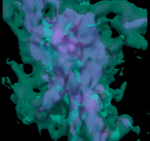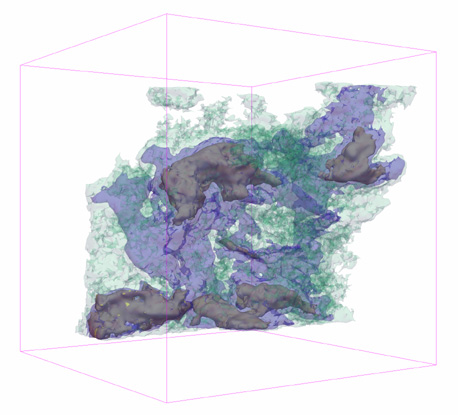Image List
-

The star-forming region NGC 1333 has been studied in infrared light with the Spitzer Space Telescope, and in radio emission with the FCRAO telescope. Using the program "3-D Slicer," astronomers can model the gas in this region three-dimensionally, then rotate and manipulate the image to study it in greater detail.
Initiative in Innovative Computing (IIC) -

Astronomers have a new 3-d perspective on the universe, thanks to the innovative project AstroMed, which uses revised medical imaging software to look at cosmic objects. This image shows a region of gas and dust in the constellation Perseus where new stars are forming. This accurate representation uses contours like those found on a topographic map, but instead of showing elevation, the contours show the strength of radio emission from carbon monoxide molecules. The two-dimensional position of that emission on the sky, combined with one-dimensional velocity information, yields a full three-dimensional image.
Initiative in Innovative Computing (IIC)